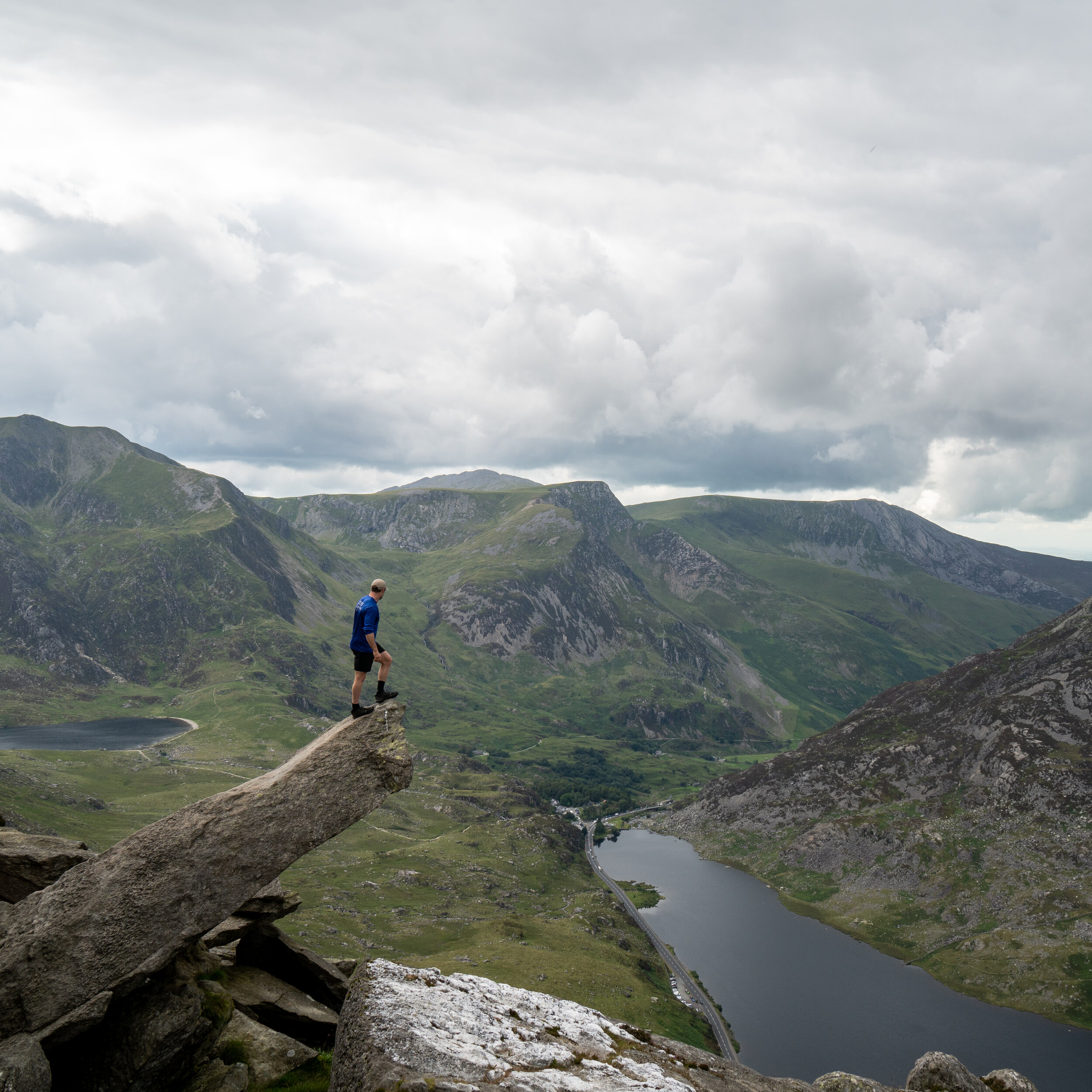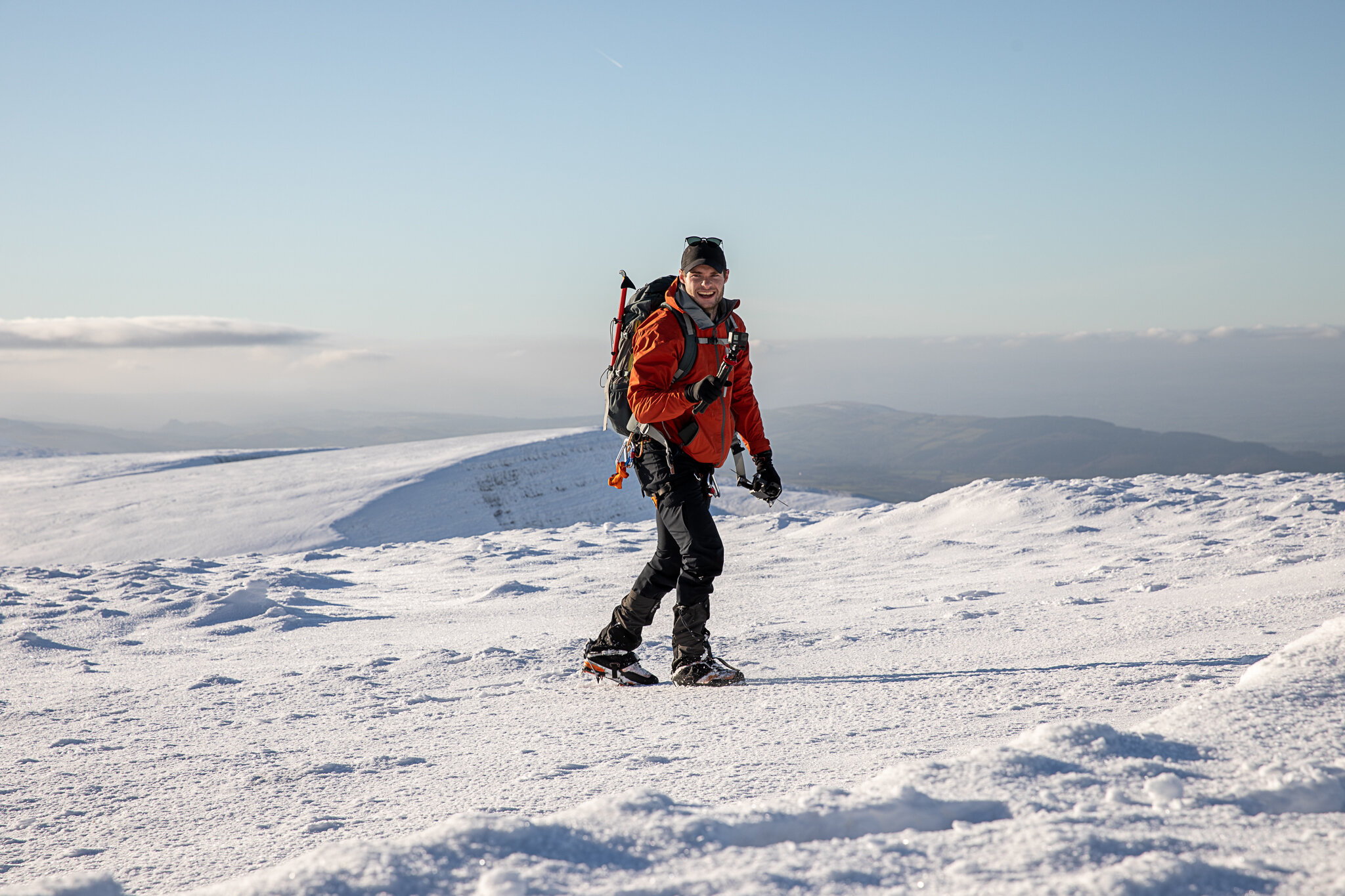Top 10 Tips for Beginner Solo Hikers
Solo hiking can be a daunting experience, especially if you are new to hiking altogether.
What do i need to do beforehand? What do I need to bring? How do I do it safely?
There’s lots to consider which can make it all feel overwhelming.
In this blog post I have called upon a decade of solo hiking experience to compile a list of the 10 best tips for hikers who wish to venture out into the mountains alone.
If you dont like reading I have also created a video blog below outlining 8 of the 10 tips.
#1 - Plan and understand your route
There are several things that you should find out before you set off on a solo hike.
Start & end point of the route
Where you’re going to park
Hike distance
Elevation gain
The type of terrain you are hiking on
How long the hike should take
To find out this information I firstly I google search the hike.
There's usually a blog, guide, or Vlog which will provide key information on the hike including the route, logistics, details and photos.
Secondly, I plot the route using a hiking app or website to find the hikes length, elevation gain, and duration, alongside the type of terrain I will be walking over.
To do this I use Ordnance Survey website and app, which is the official mapping service provider in the UK. I plot the route on my desktop computer or laptop then save and download it to my phone.
If you're new to solo hiking I'd recommended picking a short, familiar, and well marked trail to start with as this will help with both confidence and navigation.
#2 - Have safety measures in place
Nobody wants to end up like the guy off 127 Hours. Always let one person know what hike you are doing, where you are parking, and roughly how long you should be.
Remember the signal in the mountains is patchy at best so make sure you do this before you set off.
If you do have signal when you arrive at your starting point, you can share a location pin on WhatsApp with to let someone know your where you are.
I would also recommend downloading the app What Three Words.
This app splits the entire globes surface into 3x3m squares and assigns each square a set of three unique words.
More accurate than Google maps, What Three Words is perfect for sharing the start or end point for a hike with friends.
It also can be used to share you exact location in the the case of an emergency.
I would also recommend packing the following items in your backpack in case of an emergency
Powerbank & cable
Head torch- if hiking in the afternoon or evening
Small first aid kit
Extra Layers - Mid layer, hat, and gloves
#3 - Give yourself more time than you need
Hiking is about enjoying the outdoors, so the last thing you want to do is rush your hike or cut it short.
Having more time than you need also means you have the option to extend your hike or take longer stops.
There are several things to consider when factoring how much time the hike will take.
Reaching the destination
Availability of parking
Your fitness levels
Hike length, terrain, and elevation gain
Weather
Stop duration and frequency - To eat, take photos, and admire the views
Remember it is better to underestimate your ability than over estimate it.
As a photographer and vlogger, I prefer giving myself plenty of extra time as capturing content solo always takes significantly longer than I expect.
#4 - Consistently monitor the weather
As the weather in the mountains is extremely fickle and is constantly changing, I always recommend monitoring the weather right up until you set off for the hike
When checking the weather I tend to focus on the following four things
Wind speed
‘Feels like’ temperature
Chance of rain
Percentage of cloud free peaks
I cross check the weather using three separate sites/apps in order to understand the conditions I will be hiking and what clothing I need to bring.
Met Office - The official weather provider of the UK
MWIS: Mountain weather Information Service - This site provides a simple to understand snapshot of the weather forecast for the 15 mountainous regions of the UK.
Windy - An app which shows wind speed and direction
One of the main reasons I go hiking and what makes it so enjoyable are the views.
I don't see much point in heading up into the hills or mountains when I know conditions aren’t going to be great and I wont be able to see a thing.
If poor weather is forecast, I would much rather tackle a lower level walk where I know am going to get much more enjoyment, better views, and not risk put myself or others in danger.
#5 - Dress for the weather & the time of year
Don't be fooled by fine weather.
Just because it’s sunny, calm, and warm down in the valley, it doesn’t mean that the mountains will be the same.
Summits are usually much colder, more exposed, and unpredictable than the valleys and conditions can change in an instant.
No matter the weather or time of year there are four items which I always bring with me on a hike.
Waterproof coat - This also acts as a wind breaker. Alongside being waterproof it should be lightweight and functional.
Hiking shoes - These should be comfortable and durable whilst offering stability and protection
Backpack - look for one with padded shoulders, alongside chest and waist straps to help with dispersing weight. I'd recommend between 15-30 litres for a day back. I own a Osprey Talon 22 litre
Extra layers - Dependant on the time of year. I always bring another long sleeved mid- layer (either insulated down jacket or light fleece), alongside a hat and gloves just incase something goes wrong or want to stay on the mountain for sunset.
#6 - Stay on top of your hydration
Make sure you bring enough water to last the duration of your hike, or a means of filling up on route.
How much fluid you will need to bring along with you will depend on
The Weather
Hike Difficulty
Your Physiology
How much you drank before leaving
When I am out in the mountains I aim to bring a litre of water for every two hours I'm out hiking. I also use a hydro-pack as it means that I can drink when i'm on the go.
If you're going on a longer hike or you are a sweaty hiker just like me, consider taking isotonic sports drinks or electrolytes to help replace lost salts and prevent cramps.
Each litre of water you bring weighs 1kg, so if you did want to save on weight you can also purchase a refillable purification bottle.
However do check to make sure that there are water sources available on your route. The summits of peaks tend to be quite dry places.
#7 - Eat little and often
Now one of the main reasons I go hiking is so I can eat copious amounts of food during and after the hike.
The amount of food I take with me is dependant on the duration and difficulty of the walk.
I usually eat some relatively light carbs before setting off to save both weight and space in my bag alongside mking sure i’m fuelled for the hike.
For hikes under three hours, I'll just take snacks. However for anything longer I'll tend to take something more substantial.
On longer hikes I also try to eat something every 60-90 minutes to maintain energy levels.
Ideally you want to take food which is easily palatable, easy to carry and eat, and will provide you with a good source of calories and energy.
Some of my favourite things to eat on hikes include
Protein/nut/energy bars Clif bars, Fulfil bars, Nature valley
Bananas
Haribo
Soreen
Snickers bars
Overnight oats
Scotch eggs and Sausage rolls
Everybody’s physiology and palette is different, so its worth testing out a few different things to see what works well for you.
#8 - Nail your navigation
If you are serious about solo hiking It's worth investing in some navigation training and learning how to use a physical map and compass.
That being said, I mostly use my phone for navigation as I find it easier to carry and more functional to use.
Theres nothing wrong with using your phone as long as you have a proper hiking app, know how to use it, and have a power bank and charging cable to maintain battery.
There are plenty of hiking apps out there but I would recommend the I use Ordnance survey premium app.
It costs £28 for the year is extremely practical and easy to use.
Alongside being able plan routes on your computer and then instantly download them to your phone to use offline, it has an augmented reality feature which allows you to use your phones camera as a view finder to see and find key features.
Just remember to download the route before you set off in the car as signal in the mountains is patchy at best, even at the car parks.
Also once downloaded use it in offline (aeroplane) mode to save battery.
Finally, always use your best judgement when following a pre-planned route as it might not be suited for your ability and could lead you into trouble
Top tip: I actually take an extra old phone with me with the route downloaded and have it as a backup.
#9 - Know your limits
It's a fine balance between pushing yourself and soldiering on and ending up a statistic on the mountain rescue website.
No hike is worth risking injury or potentially your life for, so don't be afraid or ashamed to turn around, change your route, or stop the hike altogether.
What forces you to change your plans could be down to the weather, how you are feeling, or the terrain and route you are on.
There have been many times that I have abandoned a hike or turned around due to the weather changing, conditions being worse than expected, or me being dehydrated.
Remember your ego is the enemy and the mountains will always be there.
#10 - Enjoy it
The UK is home to over 11,000 miles of coastline, 15 National Parks, and 27 areas of Outstanding National Beauty.
We are blessed to have such a diverse and beautiful landscape on our doorstep so it’s only right that we take advantage of it.
Solo hiking will seem daunting at first, but being able to hike wherever you want, when you want, and for how long you want without worrying about anyone else is truly a liberating experience.
There are people out there who dont have the means or ability to experience the outdoors so dont take it for granted and remember to do it with a smile on your face.
Which of the 10 tips did you find the most useful? Let me know your thoughts in the comments below.
If you did find this blog helpful, I’d appreciate you giving it a share or giving me a follow on social media as every bit of support goes a long way.
For more travel, hiking, & photography inspiration around Wales check out my in-depth guides to each of my favourite Welsh regions below.



















